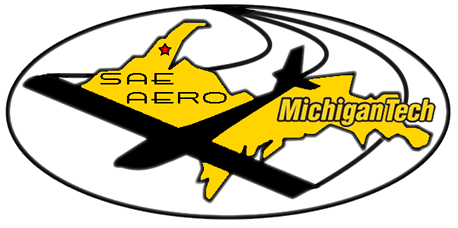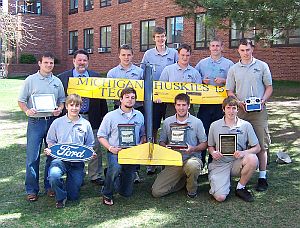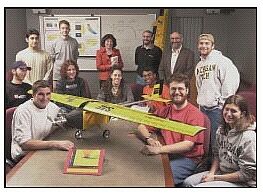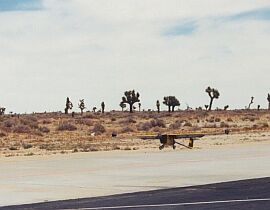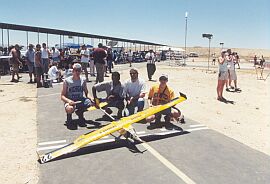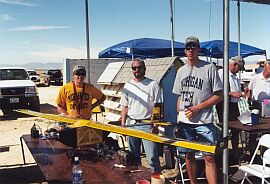|
COMPETITIONS
2011
SAE Aero Design® East
Michigan Tech Team 027 4th Overall
Operational Availability Results Regular Class: 3rd Place
SAE Aero Design® West
Michigan Tech Team 02 23rd Overall
2010
SAE Aero West 2010
Michigan Tech Team 28
March 5-7, 2010, Van Nuys, CA
2nd Place Overall
(out of 29 teams)
2nd in Team Technical
Presentation
2nd in Most Payload
Award of Excellence
2007 Aero Design World Champions
2007
1st in East, 3rd in West
News
2005
11th overall
News
2004
9th overall (East)
10th overall (West)
Best design report
News
2001
The 2001 team placed
seventeenth out of thirty-five teams in competition.
About the Program
The
Aero Design Competition challenges engineering students
to conceive, design, fabricate, and test a remote piloted aircraft.
The
challenge of the project is to design the plane within competition parameters
to carry as much weight as possible.
The
team competes in an annual competition, sponsored in part by the Society
of Automotive Engineers, to test the design of the plane against planes
from other colleges and universities.
The
competition is divided into two parts—design and flight. In the design
event, competitors present their design and demonstrate the accuracy of
their calculations in predicting the maximum payload they can lift. The
flight event determines which aircraft can lift the most weight.
Judging
criteria included originality of the design, lifting capabilities, quality
and innovation of construction techniques, and engineering calculations.
In past years the Aero design team has remained rather small, with an
average of five to seven members. This year’s team is almost three times
this size, with more than fifteen members. With this increased participation,
the team is seeking to build multiple planes and attend both East and
West competitions.
The
team uses unique technology to stand out in competition. Composites are
integrated more and more into the design and their use leads to lighter
and stronger airframes. The 2001 design also utilized vacuum bagging technology
to more effectively integrate composites into the design.
The
fuselage frame was one piece and constructed entirely out of carbon fiber,
weighing only ten ounces. This technology is going to be pursued further,
with use in more elements of the plane. Future design work is expected
to include wind tunnel research and engine thrust and drag testing. |

